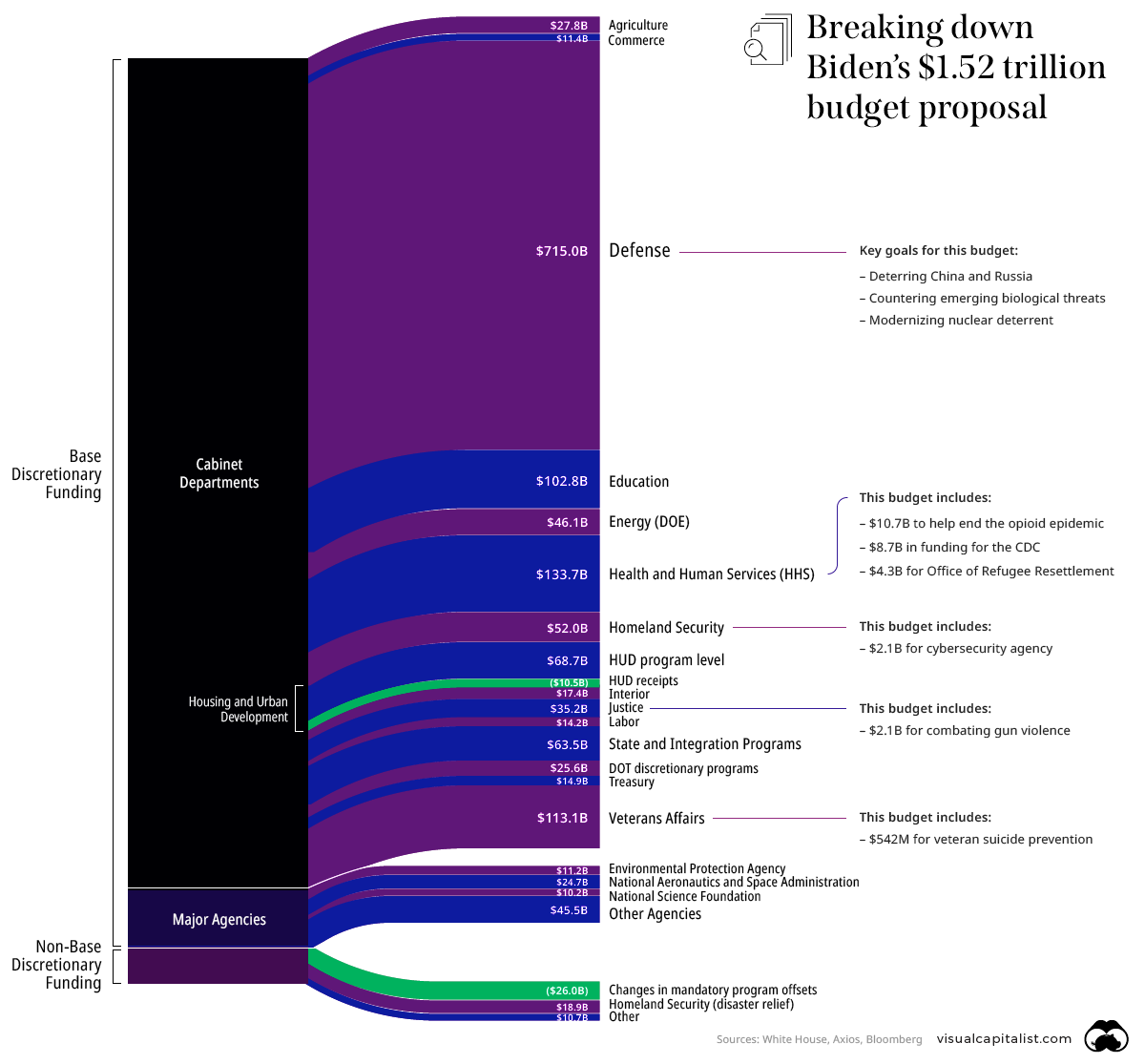Visualizing Biden’s Budget Proposal For 2022

On April 9th, President Joe Biden released his first budget proposal plan for the 2022 fiscal year.
The $1.52 trillion discretionary budget proposes boosts in funding that would help combat climate change, support disease control, and subsidize social programs.
This graphic outlines some key takeaways from Biden’s budget proposal plan and highlights how funds could be allocated in the next fiscal year.
U.S. Federal Budget 101
Before diving into the proposal’s key takeaways, it’s worth taking a step back to cover the basics around the U.S. federal budget process, for those who aren’t familiar.
Each year, the president of the U.S. is required to present a federal budget proposal to Congress. It’s usually submitted each February, but this year’s proposal has been delayed due to alleged issues with the previous administration during the handover of office.
Biden’s publicized budget only includes discretionary spending for now—a full budget that includes mandatory spending is expected to be released in the next few months.
Key Takeaways From Biden’s Budget Proposal
Overall, Biden’s proposed budget would increase funds for a majority of cabinet departments. This is a drastic pivot from last year’s proposal, which was focused on budget cuts.
Here’s a look at some of the biggest departmental changes, and their proposed spending for 2022:
| Department | 2022 Proposed Spending (Billions) | % Change from 2021 |
|---|---|---|
| Education | $29.8 | 41% |
| Commerce | $11.4 | 28% |
| Health and Human Services | $131.7 | 24% |
| Environmental Protection Agency | $11.2 | 21% |
| Interior | $17.4 | 16% |
| Agriculture | $27.8 | 16% |
| Housing and Urban Development | $68.7 | 15% |
| Transportation | $25.6 | 14% |
| Labor | $14.2 | 14% |
| State and International Aid | $63.5 | 12% |
| Department | 2022 Proposed Spending (Billions) | % Change from 2021 |
|---|---|---|
| Treasury | $14.9 | 11% |
| Energy | $46.1 | 10% |
| Small Business Administration | $0.9 | 9% |
| Veteran Affairs | $113.1 | 8% |
| Justice | $17.4 | 5% |
| Defense | $715.0 | 2% |
One of the biggest boosts in spending is for education. The proposed $29.8 billion would be a 41% increase from 2021. The extra funds would support students in high-poverty schools, as well as children with disabilities.
Health and human services is also a top priority in Biden’s budget, perhaps unsurprisingly given the global pandemic. But the boost in funds extends beyond disease control. Biden’s budget allocates $1.6 billion towards mental health grants and $10.7 billion to help stop the opioid crisis.
There are increases across all major budget categories, but defense will see the smallest increase from 2021 spending, at 2%. It’s worth noting that defense is also the biggest budget category by far, and with a total of $715 billion allocated, the budget lists deterring threats from China and Russia as a major goal.
Which Bills Will Make it Through?
It’s important to reiterate that this plan is just a proposal. Each bill needs to get passed through Congress before it becomes official.
Considering the slim majority held by Democrats, it’s unlikely that Biden’s budget will make it through Congress without any changes. Over the next few months, it’ll be interesting to see what makes it through the wringer.
Disclosure: None.




An interesting presentation of the budget proposal, and a bit of discussion as well. Unfortunately there is no mention of the proposed source of all this additional money. Although it looks like the plan is just to print it as it is needed. I see a problem with that. Am I alone in this perception???